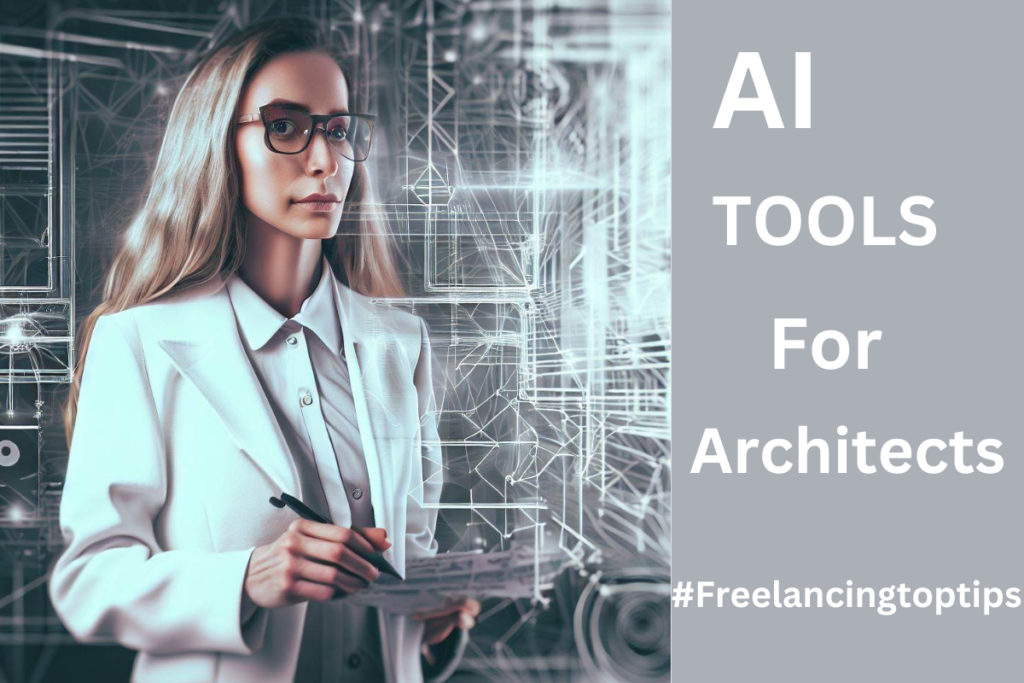Architectural design
Empower Architectural 2023:AI’ Creative Tools for Architects

Discover how AI tools are transforming architectural design. Enhance creativity, efficiency, and precision in your projects with cutting-edge technology.
Architectural Innovation with AI: Transforming Design Possibilities
In the dynamic world of architecture, the integration of Artificial Intelligence (AI) is revolutionizing how architects conceive, visualize, and execute their designs. This article delves into the remarkable realm of AI tools that elevate architectural design to unprecedented heights.
The Intersection of Architecture and AI
Architects have long been at the forefront of envisioning spaces that blend aesthetics, functionality, and innovation. The infusion of AI into this creative process has sparked a new era of possibilities. AI’s computational prowess complements architects’ ingenuity, fostering a collaboration that redefines design boundaries.
Design Concept Generation
The inception of any architectural marvel starts with an idea. AI-powered tools like Generative Design employ complex algorithms to explore myriad design possibilities based on parameters set by architects. This symbiotic interaction between architects and AI sparks fresh concepts, paving the way for innovative solutions that might have remained undiscovered. To Play Exciting Game Visit Here
Intelligent Space Optimization
Efficient space utilization is a hallmark of excellent architecture. AI-driven tools analyze spatial dynamics and user needs, suggesting optimal layouts that maximize functionality and comfort. With tools like Space Syntax Analysis, architects can fine-tune designs to ensure aesthetically pleasing and functional spaces.
Biomimicry and Structural Innovation
Nature has always been a source of inspiration for architects. AI magnifies this inspiration through biomimicry, wherein nature’s principles are translated into innovative designs. AI-enabled simulations can test structural integrity, analyze material behavior, and even replicate organic patterns, leading to structures that harmoniously blend with their environment.
Visualizing Designs in 3D and VR
AI enhances architectural visualization by creating lifelike 3D models and virtual reality (VR) experiences. Tools like Enscape and Lumion use AI to generate realistic renderings, allowing architects and clients to explore designs before construction begins. This immersive experience enhances communication and enables informed decision-making.
Sustainability and Energy Efficiency
Sustainable design is a cornerstone of modern architecture. AI tools aid architects in optimizing energy efficiency by simulating various environmental factors. Tools like DesignBuilder predict energy consumption and propose design modifications to minimize the building’s ecological footprint, aligning with the ethos of sustainable architecture.
Streamlining Design Documentation
Creating accurate design documentation is essential for construction. AI-driven tools can automate generating detailed drawings, reducing human error and saving time. BIM (Building Information Modeling) tools like Revit use AI to create precise plans, sections, and elevations from 3D models.
AI: A Collaborative Partner in Architecture
The era of architectural design powered by AI isn’t about replacing architects; it’s about enhancing their capabilities. Architects and AI are collaborative partners, where human creativity intertwines with machine precision to craft exceptional designs.
Fostering Creativity and Innovation
AI liberates architects from mundane tasks, allowing them to allocate more time to creative exploration. Freed from routine calculations, architects can focus on pushing boundaries, experimenting with unconventional materials, and weaving narratives that transform structures into art.
Embracing the Unpredictable
AI’s ability to predict patterns can also nurture design spontaneity. AI can propose unexpected design angles by analyzing vast datasets, sparking innovative solutions that transcend conventional norms. The unpredictable synergy between human intuition and AI insights often results in groundbreaking designs.
Future Horizons of AI in Architecture
As AI continues to evolve, its role in architecture will expand even further. From designing intelligent buildings that adapt to occupants’ needs to creating structures that respond to environmental changes, the future is brimming with possibilities that redefine architectural conventions.
Architectural Brilliance Enhanced by AI
The marriage of architecture and AI is an evolution rather than a revolution. The journey to elevate architectural design through AI tools is one where creativity remains at the core. Architects armed with AI tools become architects of the future, pushing design boundaries and creating structures that stand as testaments to human ingenuity and technological advancement.
Summary
AI tools shape the architectural landscape, propelling architects into a new realm of exploration and innovation. AI is an indispensable ally in the quest to elevate architectural design, from generating design concepts to optimizing spaces, enhancing sustainability, and creating immersive visualizations. Architects who embrace AI stand at the forefront of a design revolution that celebrates the fusion of human imagination and technological marvels.
Areej Fatima
Areej Fatima, an accomplished BSCS scholar, adeptly blends her technical prowess with a passion for creative expression. Rooted in a strong foundation of computer science, she weaves captivating content that bridges the gap between innovation and artistry. Areej has diligently honed her writing skills over the past six months. Her unique ability to harmonize technology and storytelling sets her apart as a versatile and promising writer.

-

 Visa Guide1 year ago
Visa Guide1 year agoCan Freelancers Get Canadian Immigration? Guide for Aspirant 2023
-

 Freelancing1 year ago
Freelancing1 year agoFreelancing as a Career: Scope for Pakistani Students 2023
-

 Money Management1 year ago
Money Management1 year agoEmbracing BRICS Currency: Financial Advice for Freelancers
-

 Freelancing11 months ago
Freelancing11 months agoBest Bank for Freelancers in Pakistan – Mastering Your Money
-

 Visa Guide1 year ago
Visa Guide1 year agoFreelancing for UK Immigration 2023 – Your Ticket to Success
-

 Freelancing1 year ago
Freelancing1 year agoFreelancer as a Student: Be Your Own Boss in 2023
-

 Freelancing1 year ago
Freelancing1 year agoThe Best Investment Options for Self-Employed 2023
-

 Visa Guide1 year ago
Visa Guide1 year agoFreelancing on an F1 Visa: Maximizing the Opportunities


